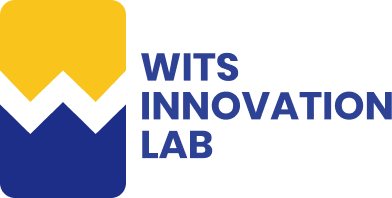In 2024, innovations will be more dominant, and technologies such as artificial intelligence (AI) will influence how people interact with them. Despite all the changes AI has introduced, web accessibility is still one of the most important fields. These days, businesses and governments aim to improve and provide equal opportunity to access information online. Ai-based web accessibility tools are undeniable, providing marvelous solutions for what seemed impossible a few years ago.
This blog will explore the technical features of AI accessibility tools and their crucial role in 2024. Subsequent sections will discuss the current trends, best practices, and struggles regarding web accessibility in an increasingly inclusive AI environment.
This blog will explore the technical features of AI accessibility tools and their crucial role in 2024. Subsequent sections will discuss the current trends, best practices, and struggles regarding web accessibility in an increasingly inclusive AI environment.
Understanding Web Accessibility in 2024
Web accessibility ensures that anybody – including disabled persons– has equal access to the content published on the web. This covers a wide rubric, including vision and hearing impairments, the physically handicapped, and the mentally challenged. In other words, the idea is to make the virtual environment accessible so that people with all types of disability can engage with it and reap the benefits.
In this setting, web accessibility in 2024 no longer remains a compliance issue but is part and parcel of UX design. Organizations that want to achieve accessibility It is not only about following legal mandates like the Americans with Disabilities Act (ADA) and Web Content Accessibility Guidelines (WCAG) 2.1, but they also act as an addition to the pool of clients in the market, thus improving the brand image and customer loyalty.
However, it is not easy to attain full web accessibility. Problems like manual testing, test scripts, and static code reviews fail to provide sufficient benefit because websites are no longer stodgy. This is why technologists turn to fancy AI tools that can provide cognisant and sustainable solutions to the issues of the modern web.
In this setting, web accessibility in 2024 no longer remains a compliance issue but is part and parcel of UX design. Organizations that want to achieve accessibility It is not only about following legal mandates like the Americans with Disabilities Act (ADA) and Web Content Accessibility Guidelines (WCAG) 2.1, but they also act as an addition to the pool of clients in the market, thus improving the brand image and customer loyalty.
However, it is not easy to attain full web accessibility. Problems like manual testing, test scripts, and static code reviews fail to provide sufficient benefit because websites are no longer stodgy. This is why technologists turn to fancy AI tools that can provide cognisant and sustainable solutions to the issues of the modern web.
The Evolution of AI in Web Accessibility
Web accessibility is one area where AI has significantly shifted the dynamics of the environment. Initially, AI techniques were used for simple processes, like depicting descriptions for images or captions for videos. These were great achievements when made, but today, the technology provides far more elaborate possibilities.
By the end of 2024, applications that target web accessibility will embed intelligent technologies such as advanced ML, NLP, and computer vision to craft specific and contextual access solutions. Such tools not only automate the identification and reporting of accessibility concerns and fixing them but also identify possible barriers to accessibility that may occur shortly.
By the end of 2024, applications that target web accessibility will embed intelligent technologies such as advanced ML, NLP, and computer vision to craft specific and contextual access solutions. Such tools not only automate the identification and reporting of accessibility concerns and fixing them but also identify possible barriers to accessibility that may occur shortly.
Key Components of AI-Powered Web Accessibility Tools
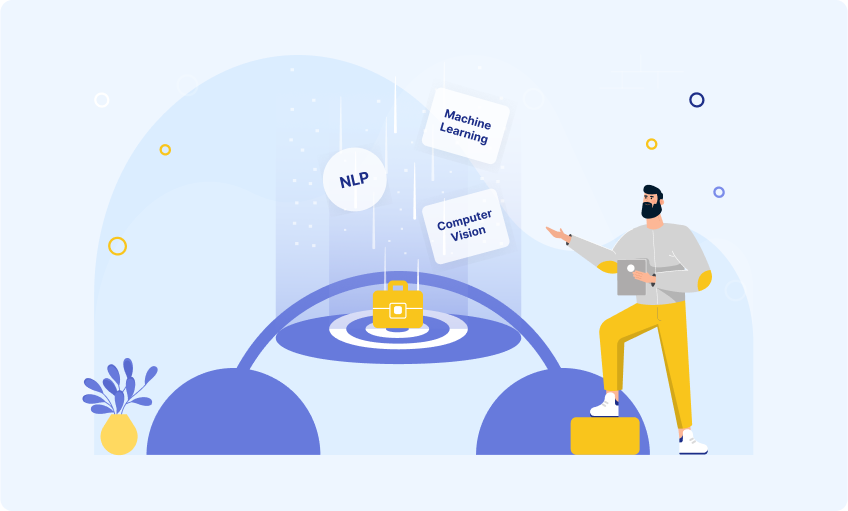
However, like most solutions, it is not without challenges, and this will discuss them. Below are the main challenges that may be depicted in front of the developers and the ways to overcome them.
1. Machine Learning for Dynamic Content Adaptation
Context-Aware Adaptation: Most current websites have some level of dynamic content, including Single-Page Applications and content that responds to user inputs. Traditional accessibility tests are problematic in such environments. AI-based tools, however, integrate ML to determine the context in which the content is being delivered and adjust items like navigation menus, forms, and media to be accessible in real-time.
User Behavior Analysis: By studying users' behavior patterns, AI can also determine typical accessibility issues affecting certain populations. This approach ensures that possible solutions can be learned and implemented depending on a user's preferences, such as increasing contrast or making navigation easy.
User Behavior Analysis: By studying users' behavior patterns, AI can also determine typical accessibility issues affecting certain populations. This approach ensures that possible solutions can be learned and implemented depending on a user's preferences, such as increasing contrast or making navigation easy.
2. Natural Language Processing (NLP) for Enhanced Content Accessibility
Automated Alt Text Generation: Where the first AI systems may have provided some basic alt text, AI in 2024 can utilize NLP to create better, more descriptive alt text based on its understanding of the content. For instance, instead of just voicing out a simple description, I, as a visually impaired user, need to see that a dog' AI can describe it like a golden retriever playing fetch in a park during sunset.'
Content Simplification: NLP algorithms can read the text of long articles and re-formulate them in layman's language for people with intellectual disabilities. This is especially useful when there is a lot of industry-specific jargon and terms that are difficult for the average person to understand, such as in the healthcare and finance industries.
Content Simplification: NLP algorithms can read the text of long articles and re-formulate them in layman's language for people with intellectual disabilities. This is especially useful when there is a lot of industry-specific jargon and terms that are difficult for the average person to understand, such as in the healthcare and finance industries.
3. Computer Vision for Visual Content Accessibility
Real-Time Image and Video Analysis: Automation can leverage artificial intelligence to interpret content from visual images and describe features that can otherwise be challenging to a visually impaired user. For instance, it can point out text embedded in images or videos and perform real-time transcriptions to provide all information content.
Object Recognition: Computer vision algorithms can also label objects from images and videos with enhanced accuracy rates. This capability is important for building accessible e-shops for people with impairments who require comprehensive descriptions of visually shown products.
Object Recognition: Computer vision algorithms can also label objects from images and videos with enhanced accuracy rates. This capability is important for building accessible e-shops for people with impairments who require comprehensive descriptions of visually shown products.
4. Automated Testing and Compliance Monitoring
Continuous Accessibility Audits: In 2024, AI-driven tools will constantly and in real-time monitor websites for compliance with accessibility standards. Such tools incorporate the best features of ML, identifying increasingly complex problems each time they perform an audit. They also prevent websites from gaining compliance with accessibility standards and gradually drifting away from compliance as the content and design change over time.
Automated Remediation: In addition to identifying problems, AI can also perform correctives—changing color contrast, adding ARIA attributes, or repositioning HTML to support screen readers. This relieves developers from constantly addressing accessibility problems and means that such problems can be fixed as soon as they are discovered.
Automated Remediation: In addition to identifying problems, AI can also perform correctives—changing color contrast, adding ARIA attributes, or repositioning HTML to support screen readers. This relieves developers from constantly addressing accessibility problems and means that such problems can be fixed as soon as they are discovered.
Companies Leading the Charge with AI-Powered Accessibility Tools
In 2024, several companies are at the forefront of integrating AI into their web accessibility solutions, driving the next wave of digital inclusivity:
1. Microsoft: Copilot for Windows
Microsoft has embedded AI in the Windows system with Copilot's help, making the accessibility feature easier for users to use. With Copilot, users can instruct their devices to turn on Live Captions, Narrator, and other accessibility tools to help people with disabilities better interface with technology. This integration highlights how incorporating AI can enhance the user experience and make applications more useful with their accessibility features.
2. OrCam: MyEye
OrCam MyEye is an artificial intelligence designed to help the visually impaired read text and recognize faces or objects in real-time. It is an application developed using advanced computer vision technology that ensures immediate response and hence enhances the quality of life of its users. Overall, this gadget demonstrates that AI goes beyond mere web assistive technologies, providing practical applications for those with visual disabilities to increase their independence and integration into society.
3. TPGi: ARC Platform
TPGi’s ARC Platform minimizes manual work related to accessibility tests and includes AI-based next-level analysis. This platform is useful for organizations that seek to guarantee that their websites comply with accessibility standards and, more importantly, provide guidance on achieving this. Through the introduction of testing utilizing AI, TPGi is capable of continuously tracking and instantly addressing barrier problems as sites remain accessed by different individuals.
The Impact of AI-Powered Accessibility Tools
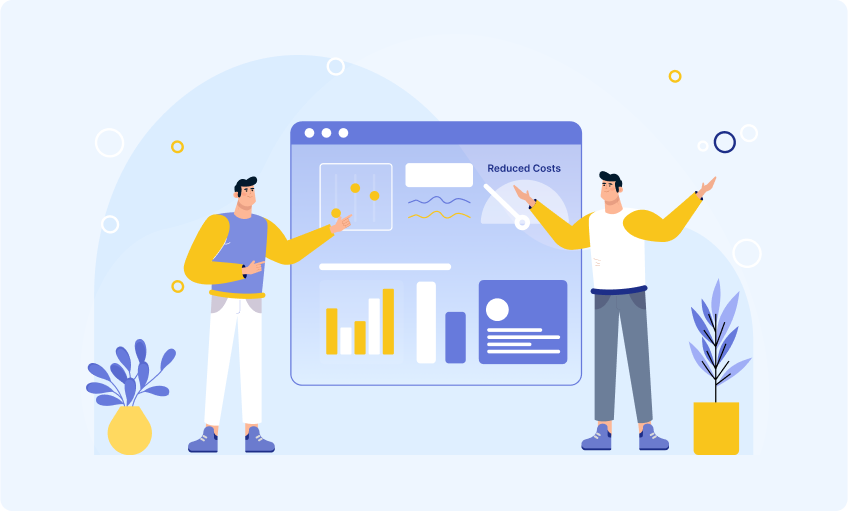
Integrating AI into web accessibility tools has profoundly impacted digital inclusion, particularly in 2024, where the demand for accessible online experiences has never been higher. Here are some of the key benefits these tools bring to the table:
1. Scalability
While traditional accessibility efforts require considerable human intervention, they cannot be easily implemented on large, complicated websites. AI can work with large volumes of data and learn the various web environments; therefore, it can be used in large organizations and government websites.
2. Accuracy and Consistency
Manual accessibility testing often results in errors and inconsistencies due to the human factor involved in the process. Automated tools are precise, fast, and consistent compared to doing it manually over some time. These tools can, therefore, pinpoint even small accessibility problems because they can draw from large data sets and improve their algorithms over time.
3. Proactive Accessibility
One of the greatest benefits of adopting AI-enabled tools is that resistive barriers can be anticipated and headed off before surfacing. Consequently, AI can identify possible issues with accessibility and integrate them into its design before modifications are necessary in a later stage, which requires more time and dedication from the developers.
4. Cost-Effectiveness
Implementing and maintaining web accessibility is expensive, especially for small businesses. Conventional audit techniques are also more expensive when conducting many audits than AI since most work is done electronically. As such, these solutions make the accessibility of specific features and tools more feasible for organizations of various sizes.
5. Enhanced User Experience
Website accessibility aims to benefit all users of a website or the Internet at large. Artificial intelligence tools provide specific and contextualized solutions to a person's needs. These tools can range from breaking down content to giving real-time audio descriptions and improving methods to help people find what they want more easily.
Top 14 AI-Powered Web Accessibility Tools
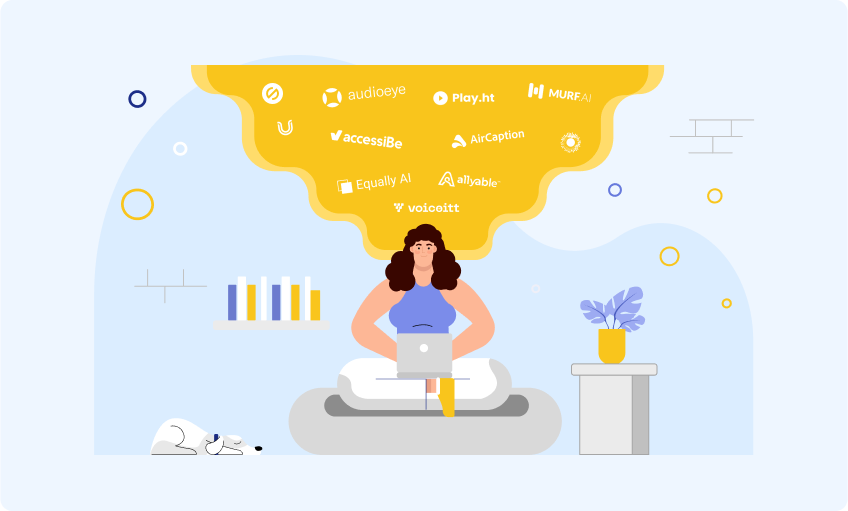
1. Stark
Stark is a valuable tool for teams wanting to prioritize accessible designs. It works perfectly with design tools such as Figma and Adobe XD, so designers can identify accessibility issues even before implementing them. Through Stark, feedback is provided in real-time, making it easier to incorporate accessibility in every project phase. Using artificial intelligence expedites the discovery of barriers and allows the development of products that are universally accessible. The availability of enterprise-grade security and the affordable nature of Stark make it a must-have tool for present-day agile accessibility teams.
2. AccessiBe
AccessiBe is an AI tool that fully automates making websites ADA or WCAG-compliant. It employs artificial intelligence to scan websites and apply dynamic modifications to make them friendly to people with disabilities. Examples include image identification for producing alt text, better keyboard controls, and ongoing checks to ensure compliance. AccessiBe shines in its comprehension of the surrounding context of web content and its capacity to make wise modifications to exclude any barriers while maintaining the site's stylistic and functionality integrity.
3. AirCaption
AirCaption is a powerful tool that translates sound and video content into true and readable text for people with hearing disorders. One key feature that sets AirCaption apart is that it can operate offline, a great advantage when used in low-connectivity contexts. The transcribing is fast and AI-supported; it covers over 60 languages; thus, the creators can offer accurate and immediate captions. Individuals can modify captions to make them suitable for the audio in terms of timing and content, with user information being processed locally to be kept private.
4. Read Easy.AI
Read Easy.AI is a tool based on artificial intelligence that makes text easier to read and understand for people with low literacy levels or cognitive impairments. In this way, having examined the content and outlined the ways of its minimization, Read Easy simplifies the text by reducing the number of difficult words and ensuring that the remaining words are spelled at least twice. AI assists writers and editors to ensure their work is understandable to the general public. It is multilingual and compatible with other programs such as Microsoft Word and Outlook, offering suggestions to the writers in real-time. It is especially useful in companies and industries that use industry-specific terms to ensure that everybody gets important information.
5. Play.ht
Play.ht brings innovation to text-to-speech applications with artificial intelligence to create highly human-like voices. With Play.ht, it's best suited for creating audiobooks, podcasts, and even chatbots. Having successfully converted itself from a telephone conference service to a software company, Play.ht currently provides over 800 voices in 142 languages.
This helps users adjust the pitch and other parameters of voice and make it as personal as possible regarding auditory perception. The platform also includes voice customization, which can be used to create new character voices for given projects. Play.ht is compatible with several other platforms, which makes it suitable for use by content creators who seek a solution that will enable them to incorporate quality voiceovers into the videos they create.
This helps users adjust the pitch and other parameters of voice and make it as personal as possible regarding auditory perception. The platform also includes voice customization, which can be used to create new character voices for given projects. Play.ht is compatible with several other platforms, which makes it suitable for use by content creators who seek a solution that will enable them to incorporate quality voiceovers into the videos they create.
6. UserWay
UserWay is a full-spectrum digital accessibility solution that leverages the power of artificial intelligence to scan and remediate issues with web content and applications. Its artificial intelligence widget offers instant solutions to typical hindrances, protecting digital content from being inaccessible to those with disabilities, as defined by WCAG. It allows for ongoing monitoring, auditing, and real-time modifications that make UserWay a strong platform for sustainable accessibility. The application is easy to use, and anyone can install it regardless of their or the business's accessibility knowledge, making it suitable for all types of companies. Many big organizations are associated with UserWay because of its reliability in delivering web accessibility solutions.
7. Murf
Murf is a voiceover company that uses artificial intelligence to turn written scripts into natural-sounding voiceovers. It provides a rich catalog of voices in all the major languages and accents and enables the client to fine-tune the synthesized speech to his/her liking. Murf has a user-friendly interface, which can work as a known tool to create professional voiceovers for education, sales promotion, and other uses. It also allows for adding voiceovers to media files such as videos and images, making it a single-tool solution for content creators aiming to add realistic AI voices to their projects.
8. AudioEye
AudioEye is an AI-based tool that automates web accessibility while incorporating human intervention where necessary. The tool enhances accessibility by making necessary corrections on the site and aligning it with the ADA and WCAG standards. Another advantage of using AudioEye is that it provides permanent solutions that can alert users regularly of new issues regarding accessibility compliance. The key differentiator for AudioEye is that it has expert audits where an AI rechecks solutions for issues, and then human accessibility specialists refine the AI fixes. Together, automation and human understanding make the AudioEye tool a useful weapon in the fight for providing barrier-free digital experiences.
9. Equally AI
Equally AI is a platform whose strength lies in its ability to employ enhanced algorithms for website accessibility. It offers an array of features that ensure businesses can conform to accessibility standards across the globe, including monitoring and dynamic content changes. Similarly, AI can learn about the nuances of web content and apply necessary improvements to make websites more accessible to disabled individuals. Integrated with multiple content management systems (CMSs), the platform suits developers and designers who are dedicated to web accessibility.
10. Braille AI
Created by the Braille Institute, Braille AI is an application that interprets digital text into Braille and makes Internet content understandable for people who read Braille. The platform incorporates several AI technologies to make the translations accurate and adapt to the required context. In addition, Braille AI supports HTML, PDF, and e-books, which makes it a versatile option for organizations interested in broadening access to their information. They illustrate how the journey toward providing better accessibility to those who depend on Braille is constantly progressing.
11. Be My Eyes AI
Be My Eyes AI provides additional help to the popular app that helps visually impaired people find sighted helpers or AI-powered virtual assistants. The AI part of the application utilizes image and speech recognition to allow for on-demand help with, for instance, reading labels or directions and object identification. It is especially useful in cases where it is possible to recruit people for volunteering, as it is an always-on tool designed to help users face daily tasks alone. Be My Eyes AI is the best combination of human and artificial innovative solutions for enhancing accessibility.
12. Voiceitt
UserWay is a full-spectrum digital accessibility solution that leverages the power of artificial intelligence to scan and remediate issues with web content and applications. Its artificial intelligence widget offers instant solutions to typical hindrances, protecting digital content from being inaccessible to those with disabilities, as defined by WCAG. It allows for ongoing monitoring, auditing, and real-time modifications that make UserWay a strong platform for sustainable accessibility. The application is easy to use, and anyone can install it regardless of their or the business's accessibility knowledge, making it suitable for all types of companies. Many big organizations are associated with UserWay because of its reliability in delivering web accessibility solutions.
13. Recite Me
Recite Me is a unique solution that enables people with disabilities to navigate websites easily by providing a package of integrated AI tools. It offers functional capabilities such as text-to-speech, screen scanning, translation, and more for various accessibility requirements. The use of AI technology in Recite Me helps enhance access to information and enables users to modify the content according to their desire. It is ideal for organizations seeking to improve the online accessibility of their services and products while meeting needs in various jurisdictions.
14. Allyable
Allyable is artificial intelligence-based software that enables website owners to achieve compliance through automation. The tool utilizes machine learning to recognize the presence of accessibility problems and offer recommendations instantly. Non-technical end-users can navigate Allyable to manage website accessibility, whereas Allyable's powerful APIs integrate the platform into current web development processes. With monitoring and reporting tools that indicate areas of improvement and strange blocks as they appear over time, Allyable is a dependable companion in creating a more accessible web.
Challenges and Considerations
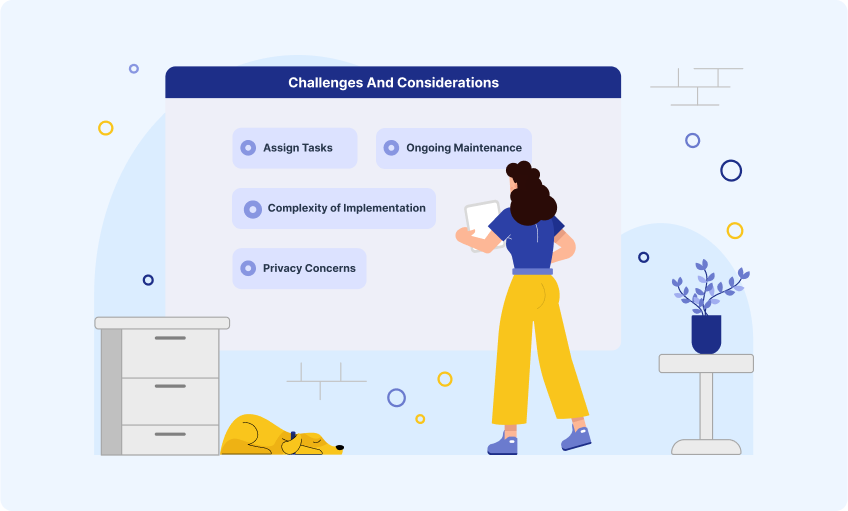
Web accessibility tools powered by AI present several opportunities, but they have their drawbacks as well:
1. Ethical Concerns
Simply put, AI is only as accurate as the data upon which a given algorithm is based. In this case, the AI tools are likely to reproduce the bias in the training data and offer accessibility solutions that are less effective for the intended users. Incorporating diversification processes is an important step to guarantee that models are trained on diverse data sets.
2. Complexity of Implementation
Generally, incorporating AI accessibility features in a web environment may prove challenging and require extensive IT skills. This requires organizations to be willing to allocate the needed resources and personnel for training and implementation.
3. Ongoing Maintenance
Using AI tools also means they must be monitored constantly and updated regularly to remain efficient. As with any type of software, these tools are prone to becoming outdated as new web standards emerge and new forms of accessibility barriers are developed. This means that it can only be achieved when organizations are willing to make a long-term investment.
4. Privacy Concerns
AI tools, in most cases, depend on user information to offer specific accessibility solutions. Considering that users' personal data is collected and processed, it is crucial to guarantee its proper handling and compliance with privacy standards.
The Future of AI in Web Accessibility

Looking ahead, it is indisputable that AI will remain instrumental in the quest for better web accessibility. In the next couple of years, it will be possible to observe the creation of even more complex tools to set the boundaries of possibility. Here are some trends to follow:
1. AI-Driven Personalization
Advanced future AI tools will take personalization to new heights with tools for general user needs tailored to every user. This could include adapting content dynamically in response to user feedback, making the web experience unique.
2. Voice-Activated Accessibility
Given the popularity of voice-activated AI assistants such as Siri and Alexa, we can anticipate that voice commands will be further incorporated with web accessibility tools. This would enable those with a motor disability not only to use voice to access features on a website but also to navigate the website using voice alone.
3. Augmented Reality (AR) and Virtual Reality (VR) Accessibility
The effectiveness of tool-based accessibility support in the context of AR and VR will call for more support as their use becomes widespread in the future. AI will be instrumental in designing the solutions that will enable equal access to these rich experiences irrespective of the end-users' disabilities.
4. Cross-Platform Accessibility
In the future, web accessibility will not be limited to standard websites. AI tools must address the shift towards using mobile applications, smart devices, and other platforms – making the interactions seamless across all interfaces.
Conclusion
By the end of 2024, AI Web assistive tools are not mere inventions but commodities that people cannot do without on the internet. At a time when the web is progressively becoming more complex, these tools constitute a flexible and global solution to web accessibility issues. These tools use cutting-edge artificial intelligence, natural language processing, and computer vision to ensure that digital product interactions are more inclusive in terms of user experience as well as compliance. When giants such as Microsoft, accessiBe, OrCam, and TPGi show that the future of accessibility is AI, opening the gate for a better web experience for all.

Written by / Author
Manasi Maheshwari
Found this useful? Share With
Top blogs
Most Read Blogs
Wits Innovation Lab is where creativity and innovation flourish. We provide the tools you need to come up with innovative solutions for today's businesses, big or small.
© 2026 Wits Innovation Lab, All rights reserved
Crafted in-house by WIL’s talented minds

